Using Fiction to Launch Our 4th Grade Science
A MiddleWeb Blog
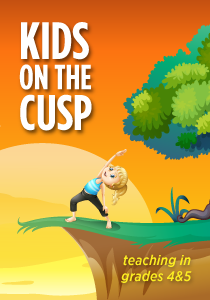 I went back to my classroom recently. This is a common occurrence happening to many teachers in classrooms across the United States. But here in New Jersey, the school year won’t officially begin until the first week of September.
I went back to my classroom recently. This is a common occurrence happening to many teachers in classrooms across the United States. But here in New Jersey, the school year won’t officially begin until the first week of September.
Still, I found myself standing in Room 106, slowly pivoting in a circle, trying to picture what the coming school year might look like. It was August 1st.
So why was I standing in the middle of my classroom, five weeks prior to beginning of our 2017-2018 school year, you may ask?
The only honest answer is that I was starting to twitch at home. In the early mornings, before the kids woke up, I found myself madly clicking all over cyberspace, trying to find new and exciting ideas to try in September…and October…and November.
Admittedly, I have issues.
 Here’s the thing
Here’s the thing
Work and teaching have never been synonymous for me. I don’t go to work. I go to school. Yes, I get paid to be there during the actual school day, but I choose to spend my time “away from work” exploring the possibilities for tomorrow’s lessons.
Summer gives me lots of time away from the office to do this. Do I wish I was compensated financially for this time? Of course. Even though I may not be paid in currency for my summer research and planning, the returns are worth it.
This 2017-18 school year is going to be exciting. Challenging, but loads of fun too. I can feel it.
This year, there will be six more students in my self-contained class (4T) than in last year’s bunch. I’m going to need more space this year. Standing there, looking around, analyzing whether the configuration of the room I’d envisioned would actually house these learners and myself comfortably for the next ten months, I nodded in approval. Our custodians had set up the classroom according to the map I’d left them in June. It was looking good so far. Thanks, guys!
Now, for the fun part
For me, the fun part is planning how to fill our days in this room.
This year will be 4T’s second year participating in the Global Read Aloud (GRA), created by Pernille Ripp. Last year’s selection, Pax by Sara Pennypacker, proved to be an incredible teaching tool.
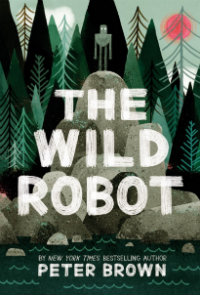
Just thinking about the story and its possibilities had my fingers dancing across the keyboard in anticipation. What I found will become the first month or two of Literacy Workshop. Although we won’t be meeting Roz and the island animals until early October when the GRA begins, we will be meeting their creator, Peter Brown, using what I discovered while summer surfing on-line.
This gives us six weeks to develop our schema of the author and his work before the GRA begins.
This also gives us six weeks to introduce ourselves to each other, to get to know each other a little, and to discover a little bit more about who we are as readers and as writers.
Six weeks to find out who likes sports, who likes art, who has a telescope at home, who has been playing guitar for two years, who has a brown belt in Tae Kwan Do. Six weeks to settle in before exploring the story of Roz and her life on that island.
Introducing Mr. Brown
Get-to-Know-You activities are an important part of the beginning of the year, of testing the waters and starting to develop our individual comfort level within a new group. Science teachers may refer to this phenomenon as the adaptation process.
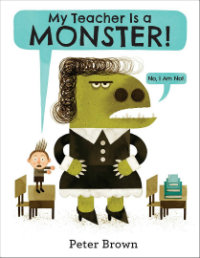
Mr. Brown doesn’t know that three of his stories will be introduced in 4T this fall, starting with a little humor to break the ice with My Teacher Is a Monster. I have a feeling one or two of my students may have a few misconceptions about their new fourth grade teacher, Ms. Tarashuk.
While clicking around for information about the author, I came across a video from the Library of Congress National Book Festival. In it, Mr. Brown introduces himself. What better way to start a discussion about writing and reading than to meet the author himself?
In this clip I can see two or three mini-lessons to use as we begin our adaptation into the new 4T. We can look at how one author draws from his own experiences, how one writer uses these experiences to create stories that we can all relate to. We can see, first-hand, an artist’s interpretations and inspirations of the world he lives in. He is a reader, a writer, and an illustrator…and we can be too. Like Mr. Brown, we can start putting our ideas down on paper. Plus, we get to go outside and fly paper airplanes after we read the story!
I haven’t decided whether I will read the story to my new crew before or after watching Mr. Brown’s book talk. In his discussion, we never actually see the pages of the book or the slides he is presenting to his audience. I think that’s part of the reason I like this clip.
Without the actual book, we, as readers, can focus on the author as a person, not as some vague idea of what a writer is. Mr. Brown tells us that he was a writer when he was in fourth grade. The proof of this is right on the screen in front of us.
Adapting to a new science curriculum
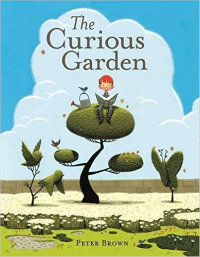
Brown’s theme of the opportunities that curiosity allows us to see is a strong jumping off point into our study of plants and animals, and their relationships with what many may call “the civilized world.” (And there are lots of starter ideas in the Educator’s Guide.)
Nothing can pique a child’s curiosity more than a look at some strange and unknown species living on our planet. As we begin our science inquiries (and prepare to meet Roz, our wild robot, and her island community), these videos will certainly get the discussion going!
10 Amazing Animal Disguises (w/ video)
25 Coolest Ways That Animals Adapt To Their Environments
By the time we’re done with these resources, we will be ready for Roz, with schema-filled heads, our new knowledge of plants, animals, ecology, and technology, and our own curiosity. It should make for some fun learning!
I’ll keep you posted on our adventures with Roz, the wild robot.
And thanks, Mr. Brown, for helping me connect with my new crew…and for writing your stories.
Links to learn more about plant and animal adaptations:
► From the Walking Classroom’s Podcast Partners: listen to scientists talk about their careers in Life Science.
► These two PowerPoints may take a moment to download, but they are good!
Adaptations and interactions between organisms
► Pete’s PowerPoint Station: Animal Adaptations
► Find these related games/interactives at Interactive Sites for Education: Animal Adaptations, Animal Classification, and Biomes.

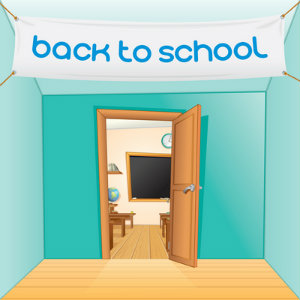 Here’s the thing
Here’s the thing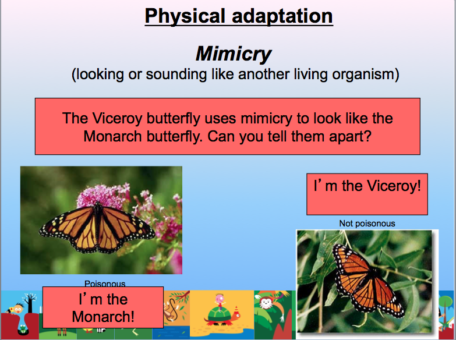




































Thanks for the inspiring post. This will be my first year with the Global Read Aloud. I may borrow some of your introductory activities to do with my multi-grade classroom- Grades 3-4-5, here in Northern NH. Perhaps we can skype each other during the read aloud?
Thank you, Teri!…This is my second year of GRA, and it was an amazing experience last year!…some more ideas related to it will be in my next article coming out in a few days. Maybe you can try them with your crew…mine responded with gusto! Haven’t used Skype with a class yet, but I’m up for the possibility!